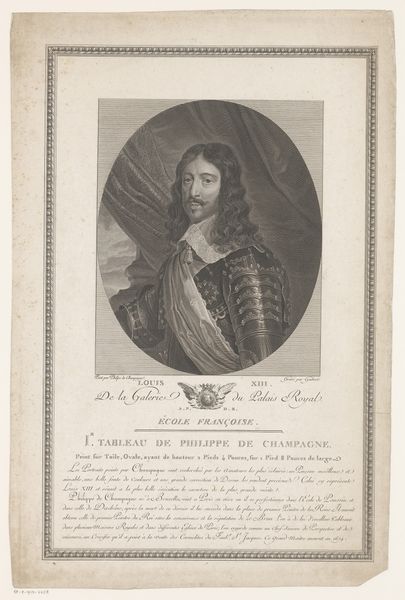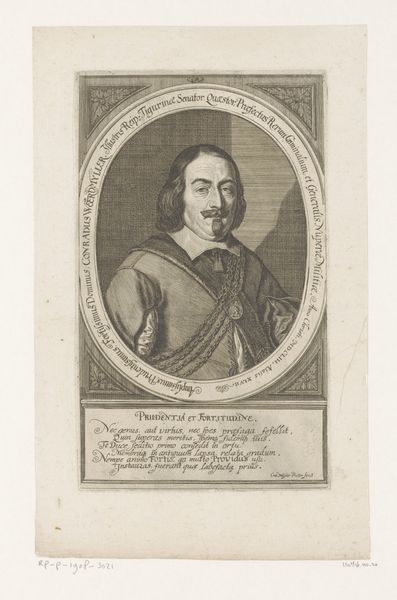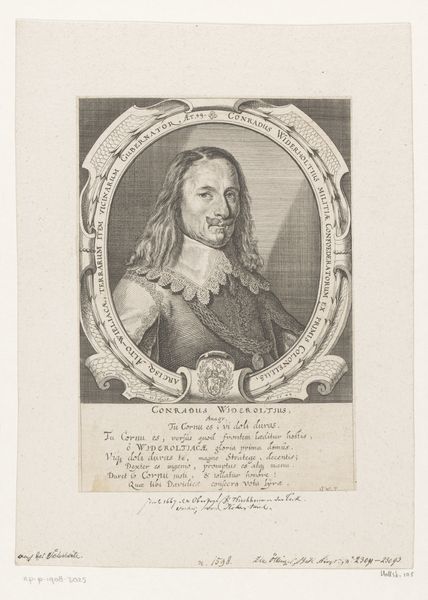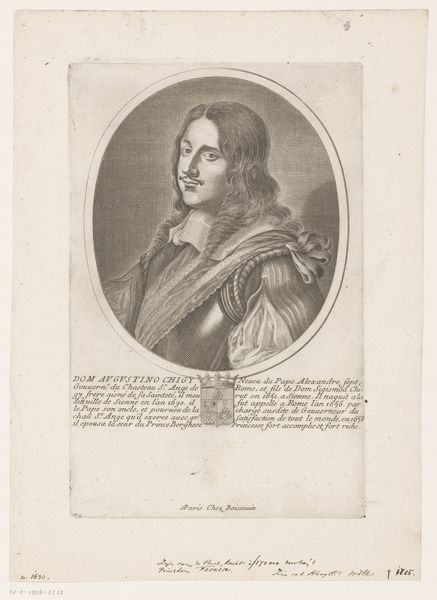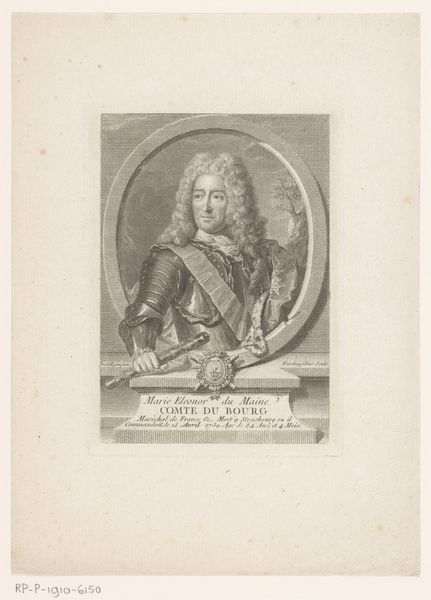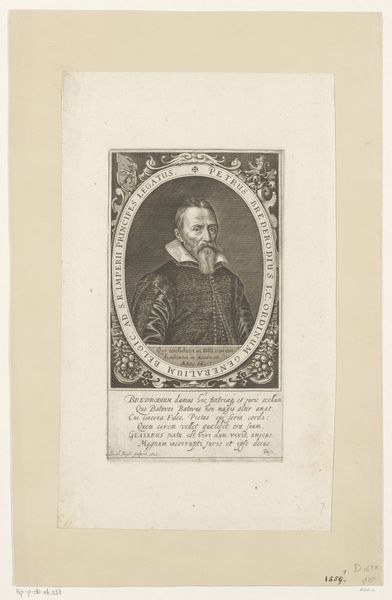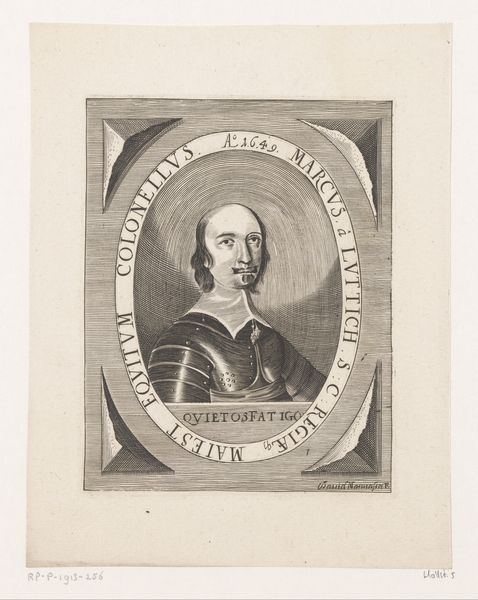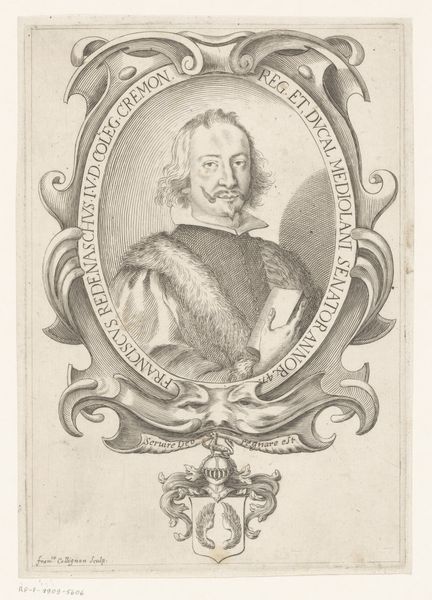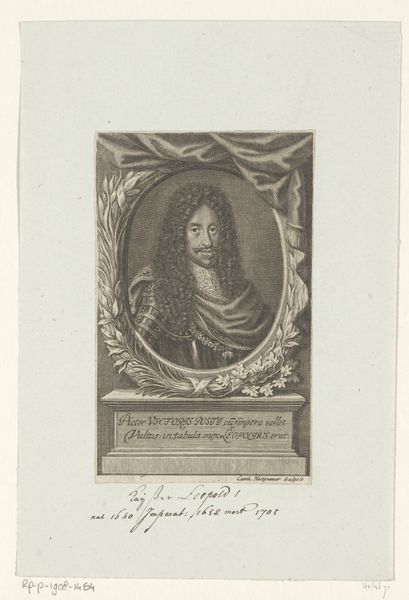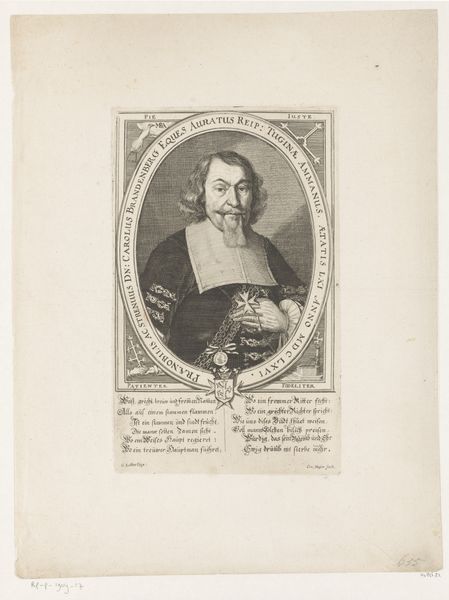
Dimensions: height 397 mm, width 271 mm
Copyright: Rijks Museum: Open Domain
Curator: Before us, we have a piece entitled "Portret van Karel I," an engraving dating from between 1786 and 1808, attributed to Antoine Louis Romanet. Editor: My immediate impression is one of restrained power. The monochromatic palette concentrates the eye on the intricate details, especially the play of light across the armour and the sitter's face. Curator: Absolutely. Consider the context: Charles I, King of England, Scotland, and Ireland, a figure of immense political and religious controversy. This portrait, engraved decades after his execution, revives not just his image but also the debates surrounding his reign. The piece highlights the power of representation and the enduring impact of historical figures, seen through a lens of post-revolution reflection. Editor: The engraving technique, while seemingly straightforward, employs an astonishing variety of line weights and densities. It constructs form through subtle modulations of light and shadow. The artist’s mastery lies in making flat surfaces appear dimensional through meticulous craftsmanship. Curator: The work also reveals the complex intersections of monarchy, art, and social class. Consider who this portrait was meant for – most likely, other members of the aristocracy or upper classes with a keen interest in historical and political iconography. It's a study in maintaining a certain level of regal presence amid periods of shifting political landscapes. Editor: Precisely! The artist captures a dignified, yet almost melancholic figure, doesn’t he? He has these fine textural nuances. The armour itself is painstakingly rendered; it acts as a rigid shell that contains Charles and also suggests a potent display of dominance and social authority. Curator: Indeed. In the act of representing Charles this way, Romanet subtly inserts him into the ongoing narratives about power, legitimacy, and the very nature of kingship— narratives that were dramatically reshaped by the political upheavals of the late 18th century. Editor: It is compelling to view this piece not just as a depiction of a historical figure, but also as a self-reflexive exploration of printmaking capabilities. Curator: Looking at the print, I am struck by its role as a historical artifact that allows us to see, feel, and learn a bit more about how art, gender, class, and history coalesce in a very powerful statement. Editor: For me, the technical expertise involved and the resulting texture is captivating, allowing us to explore the image in a much deeper way.
Comments
No comments
Be the first to comment and join the conversation on the ultimate creative platform.
